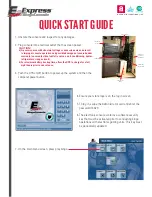
7. Cross-talk S u p p r e s s i o n
T h e following methods are taken t o suppress cross-talk
caused by guard-bandless recording.
7 . 1 Y-signal cross-talk suppression
7.1.1 Azimuth recording
To produce the m a x i m u m output, the orientation of t h e
Playback-head should be the same t o that of Recording-
head with respect to the tape direction or track direction.
The azimuth, or orientation of head-gap, of A C R should
be a t a right angle (0 azimuth) t o the t a p e . As mentioned,
each of the A- and B-heads records picture information
of o n e field. The orientation of the g a p of video heads is
intentionally m a d e off-azimuth or tilted a little in o p p o
site direction each other (0: ± 7 ° , 8 m m : ± 1 0 ° , V H S :
± 6 ° ) . Then the azimuth difference between the A-head
and B-head becomes 14° in 1/2"
0,
t h a t makes A-head
sensitive t o t h e signal o n the A-tracks a n d n o t t o the sig- /
nal o n adjacent B-tracks, a n d o n the other h a n d it makes
B-head sensitive t o B-tracks a n d insensitive t o A-tracks.
This azimuth effect suppresses t h e crosstalk from adjacent
tracks when there is n o g u a r d - b a n d . This m e t h o d is effec
tive t o Y-signal because the azimuth effect increases as t h e
signal frequency increases.
Azimuth effect: The played hack signal is decreased or lost
in high frequency range if the orientation of the gap of
playback head is not the same as that of recording head.
The larger the orientation difference between the two
heads, the smaller the reproduced signal.
629kHz
3.4MHz
4.4MHz
Azimut
h
los
s
(dB
)
A z i m u t h
Fig. 2 0 Azimuth Loss
Head direction
Track width
Gap
Gap
Head B
Head A
VHS : 9 = ±6°
Azimuth of
head A
Azimuth of
head B
Trackwidth
Fig. 21 Azimuth Recording
Cross-talk/signa
l outpu
t (dB
)
Track width": 6ju
Azimuth : 90°
Fig. 2 2 Cross-talk Characteristic at 1 4 ° Azimuth
Difference
39
/(MHz)















































